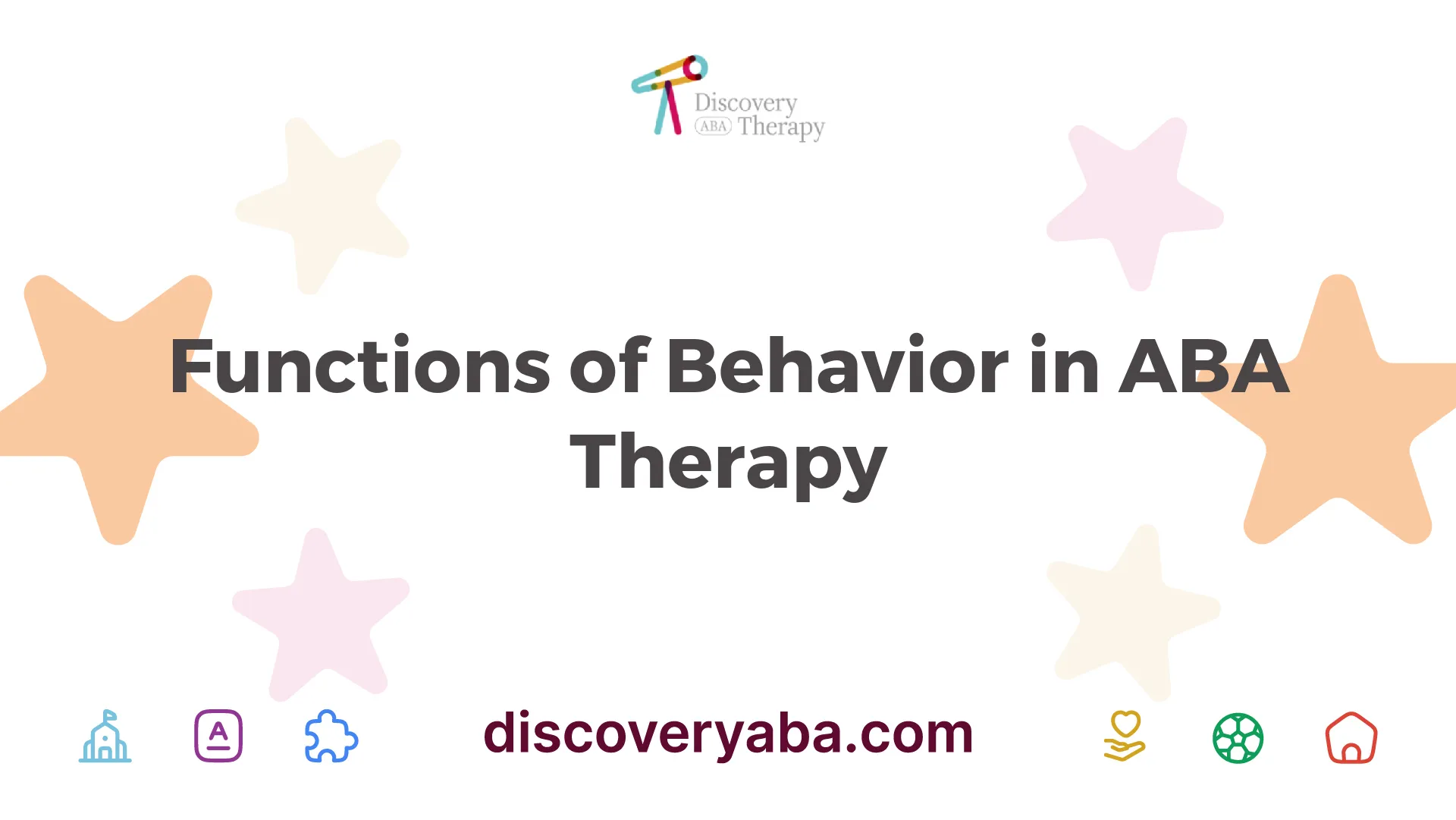Building Emotional Resilience with ABA Approach
Discover strategies for building emotional resilience with ABA to support loved ones on their journey.

Understanding Emotional Resilience
Emotional resilience refers to the ability to adapt to stressful situations and bounce back from adversity. It is a crucial skill for individuals, especially those navigating challenges such as autism. Understanding the elements and importance of emotional resilience can support the development of coping mechanisms and promote well-being.

Elements of Emotional Resilience
Several key components contribute to emotional resilience. These elements include:
ElementDescriptionEmotion RegulationThe ability to manage emotions effectively. It involves understanding how to navigate thoughts and choose interpretations of situations, contributing to overall happiness.Purpose and MeaningResilient individuals often find a meaningful purpose in life. This commitment can involve overcoming challenges or pain, leading to long-term fulfillment.Social ConnectionsStrong relationships provide emotional support and foster resilience by creating a sense of security and belonging.Self-EfficacyBelieving in one's abilities contributes to resilience. This confidence allows individuals to tackle new challenges and persist in the face of difficulties.Coping SkillsStrategies to deal with stress effectively, including problem-solving and adaptability. These skills can be developed through methods such as coping skills in ABA therapy.
Importance of Emotional Resilience
Developing emotional resilience is essential for several reasons. It not only helps individuals navigate challenges but also enhances their overall quality of life. The benefits include:
BenefitDescriptionImproved AdaptabilityResilient individuals are better equipped to adjust to changes and unexpected circumstances, making transitions smoother.Enhanced Mental HealthEmotional resilience is linked to lower rates of anxiety and depression, particularly relevant for those engaging in ABA for autism and depression.Better Social SkillsSkills acquired through resilience-building, such as communication and teamwork, can lead to stronger relationships, fostering a sense of community and belonging. Consider exploring friendship building through ABA for further insights.Increased ConfidenceBy overcoming challenges, individuals build self-esteem and confidence, which are critical for engaging in meaningful activities and pursuing personal goals.Long-term Well-beingResilience fosters apositive outlook on life, promoting sustainable happiness and life satisfaction, which are vital for holistic well-being.
Research conducted in 2023 demonstrated that an Applied Behavior Analysis (ABA) program significantly improved emotional and social skills in children with autism spectrum disorder, showcasing the effectiveness of structured approaches in developing these essential life skills [2]. Building emotional resilience with ABA can lead to meaningful improvements in daily living and coping abilities.
Choosing to focus on resilience can empower parents and caregivers in supporting their loved ones, equipping them with the tools necessary to navigate life's challenges effectively.

Functions of Behavior in ABA Therapy
Understanding the functions of behavior within the context of Applied Behavior Analysis (ABA) is crucial for developing effective treatment plans. This section will focus on how behavior functions are identified and how these insights are utilized to implement targeted interventions.
Identifying Behavior Functions
In ABA therapy, identifying the function of a behavior involves observing the interactions between antecedents (triggers), behaviors, and consequences—commonly referred to as the ABC model (Antecedent-Behavior-Consequence). This systematic approach allows clinicians to pinpoint why a behavior occurs, which is essential for crafting effective treatment strategies.
The four primary functions of behavior are:
Function of BehaviorDescriptionEscape/AvoidanceAvoiding unwanted tasks or situationsAttention-SeekingEngaging in behavior to gain attentionAccess to TangiblesPerforming behaviors to access preferred itemsSensory StimulationEngaging in behavior due to sensory needs
Identifying these functions enhances the ability to understand a child's needs and motivations, which is essential for creating a supportive environment. More information about this process can be found in the detailed guide on the functions of behavior in ABA therapy.
Implementing Effective Treatment Plans
Once the function of a behavior has been identified, behavior analysts can develop targeted interventions aimed at addressing problematic behaviors. This process involves selecting strategies that not only decrease undesirable behaviors but also promote the development of more appropriate, adaptive behaviors.
For example, if a child engages in escape behavior during homework, an effective treatment plan might include:
Through these methods, the aim is to gradually replace maladaptive behaviors with constructive alternatives. Targeted interventions can be tailored to meet specific needs, such as aba for anger management in autism or coping skills in aba therapy.
The combination of identifying behavior functions and implementing effective treatment plans is vital for building emotional resilience with ABA. For additional strategies and insights on behavioral interventions, consider exploring topics such as teaching problem solving with aba, or the applications of ABA in various settings, like aba for classroom success.
ABA Techniques for Emotional Regulation
Emotional regulation is crucial for individuals with autism. ABA techniques provide valuable strategies to help in teaching emotional regulation and enhancing emotional resilience.
Teaching Emotional Regulation
ABA techniques are effective in teaching individuals with autism how to recognize, understand, and manage their emotions. This process involves developing adaptive emotional regulation strategies that can be utilized in various situations, including social interactions and daily challenges.
Here are some key methods used:
TechniqueDescriptionModeling BehaviorDemonstrating emotional responsesRole-PlayingPracticing skills in controlled scenariosVisual SupportsUsing charts for emotion identificationCoping SkillsTeaching calming techniques
Enhancing Emotional Resilience
To enhance emotional resilience, it is essential to establish strong social support networks and meaningful purposes. By fostering connections with family, friends, and communities, individuals with autism can gain a sense of emotional security, which helps reduce anxiety and stress [1].
ABA approaches include:
StrategyPurposeBuilding Social SkillsEnhancing connections and support systemsStrengthening Problem-SolvingDeveloping confidence in overcoming challengesPromoting a Sense of PurposeFostering motivation through meaningful goals
By integrating these techniques, ABA therapy plays a significant role in building emotional resilience with ABA for individuals with autism, equipping them with the tools necessary to thrive in their everyday lives.
Approaches in ABA Therapy
When exploring various strategies in ABA therapy, it is crucial to recognize the diverse approaches that cater to the unique needs of individuals, particularly those with autism. Each approach has its own methodology and effectiveness in building emotional resilience.
Diverse ABA Approaches
Different ABA strategies are designed to help individuals develop essential skills and coping mechanisms. Some of the most commonly used approaches include:
Approach NameDescriptionDiscrete Trial Training (DTT)This traditional method breaks down skills into smaller tasks, employing tangible rewards for positive reinforcement. It usually occurs in a one-on-one setting, which can be quite effective for learning specific skills.Naturalistic TeachingThis approach applies ABA principles during everyday activities, utilizing the individual's interests to promote engagement. It takes place in real-life environments, facilitating the transfer of skills to various situations.Verbal Behavior ApproachFocused on language development, this method deconstructs communication into functional units, customizing interventions to meet individual communication needs. It is particularly beneficial for those with expressive and receptive language challenges.Early Start Denver Model (ESDM)This model integrates ABA techniques with developmental strategies in a play-centered and naturalistic setting, fostering a positive interaction between the child and therapist while enhancing social, communication, cognitive, and adaptive skills [6].
Understanding these various approaches is vital for parents and caregivers seeking effective methods in building emotional resilience with ABA.
Modern ABA Techniques
Modern ABA has evolved to incorporate innovative techniques that enhance the therapeutic process. These contemporary practices often address emotional regulation and resilience.
Modern TechniqueDescriptionFunction-Based InterventionsBy understanding the functions underlying specific behaviors, therapists can tailor individualized treatment plans that promote appropriate alternative behaviors while minimizing maladaptive behaviors.Coping Skills TrainingIntegrating coping skills into ABA therapy engages individuals in effective strategies for managing emotions and stress. This training emphasizes practical applications that foster resilience and self-management.Social Skills DevelopmentFocusing on building interpersonal relationships, social skills interventions encourage individuals to engage in positive interactions with peers. Techniques may include role-playing and structured group activities [8].
These modern techniques are instrumental in achieving significant outcomes for individuals with autism, facilitating improvements in emotional resilience and overall well-being. For targeted information on specific concerns, parents and caregivers can explore resources such as aba therapy for joint attention and aba for anger management in autism.
ABA Therapy Benefits and Challenges
ABA therapy offers numerous benefits for individuals, particularly those with autism spectrum disorder (ASD). It equips them with essential skills for emotional regulation and resilience. However, challenges such as accessibility and affordability often hinder families from fully utilizing these services.
Positive Impact of ABA Therapy
Applied Behavior Analysis (ABA) plays a crucial role in building emotional resilience in individuals with autism. The therapy encourages the development of coping skills, emotional regulation, and problem-solving abilities. ABA techniques are designed to foster positive behavior changes through reinforcement and structured interventions.
Data suggests that children undergoing ABA therapy demonstrate improvements in various areas, including self-help skills and social interactions. The positive effects of ABA therapy include:
Benefit AreaImprovement PercentageSocial Skills65%Emotional Regulation70%Self-Care Skills60%
For more information about specific skills taught in ABA therapy, visit our article on aba therapy for self-care skills.
Accessibility and Affordability
Despite its advantages, access to ABA therapy poses significant challenges. Many families face financial barriers due to the average cost of approximately $1,200 weekly for 10 hours of sessions, translating to roughly $120 per hour [9]. This investment often lasts up to three years. Financial constraints and discrepancies in insurance coverage complicate access, impacting treatment adherence and benefits for emotional growth and skill development.
Statistics highlight that only 28% of children who underwent 24 months of treatment managed to achieve the full dosage of therapy. While most states and Washington D.C. have enacted autism mandates requiring commercial insurers to cover ABA services, around half of all commercial insurance plans remain exempt from these mandates [11]. This creates further obstacles for families seeking consistent care.
For more insights on coping skills, explore our article on coping skills in aba therapy. Additionally, learn how ABA can assist with anger management in autism by visiting aba for anger management in autism.
Research on ABA Effectiveness
The effectiveness of Applied Behavior Analysis (ABA) in building emotional resilience, particularly for individuals with autism, has been supported by various studies. Research highlights significant enhancements in social and emotional skills among participants engaged in ABA programs.
ABA Study Findings
A recent study conducted in 2023 in Wuhan, China, involved 100 boys aged 4 to 11. The findings emphasized that the ABA program had a profound impact on the participants, improving their social and communicative skills significantly. The study utilized SPSS-24 software for data analysis and revealed several key improvements in children with autism spectrum disorder:
Area of ImprovementImprovement NotedSocial SkillsSignificantCommunicative SkillsSignificantAdaptive BehaviorsSignificantSeparation AnxietyImproved
The data confirmed that the ABA program notably enhanced emotional and social development among institutionalized children, highlighting its therapeutic value [12].
ABA Therapy Outcomes
The conclusions drawn from the 2023 study emphasized the effectiveness of ABA in fostering emotional resilience and social adaptability. The program led to marked improvements across various skills, particularly in institutional care settings, where structured ABA interventions were delivered through tailored sessions. These sessions directly addressed the emotional and social needs of children, leading to better daily life skills and overall wellbeing.
The research supports the assertion that ABA therapy is beneficial for developing emotional resilience in children with autism, showcasing its potential in improving their quality of life. For further reading on skills development through ABA, explore resources on coping skills in ABA therapy and aba therapy for self-care skills.
References
[2]:
[3]:
[4]:
[5]:
[6]:
[7]:
[8]:
[9]:
[10]:
[11]:
[12]:
Does Your Child Have An Autism Diagnosis?
Learn More About How ABA Therapy Can Help
Find More Articles
Contact us
North Carolina, Tennessee, Nevada, New Jersey, Utah, Virginia
New Hampshire, Maine
Massachusetts, Indiana, Arizona, Georgia
.avif)


































































































